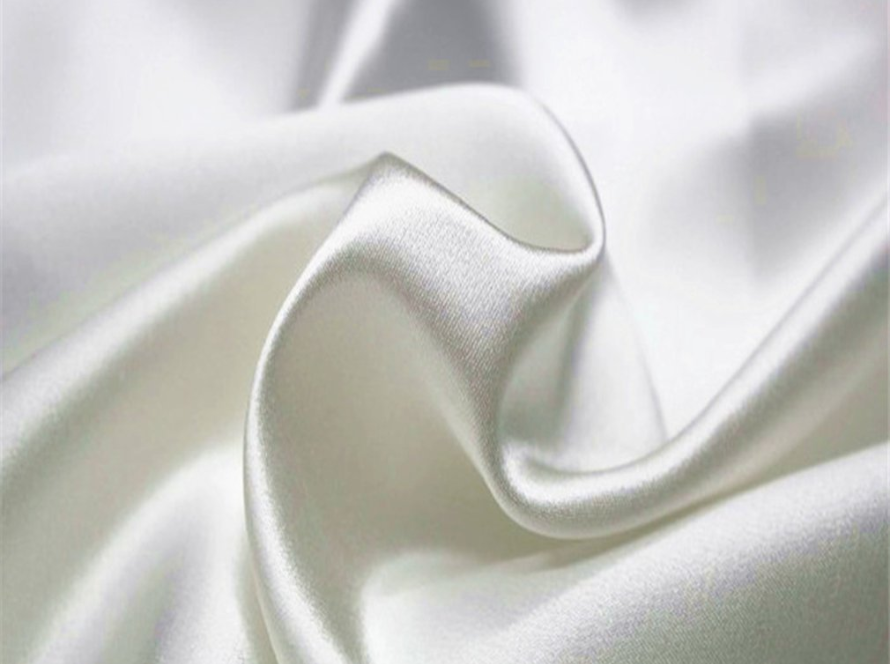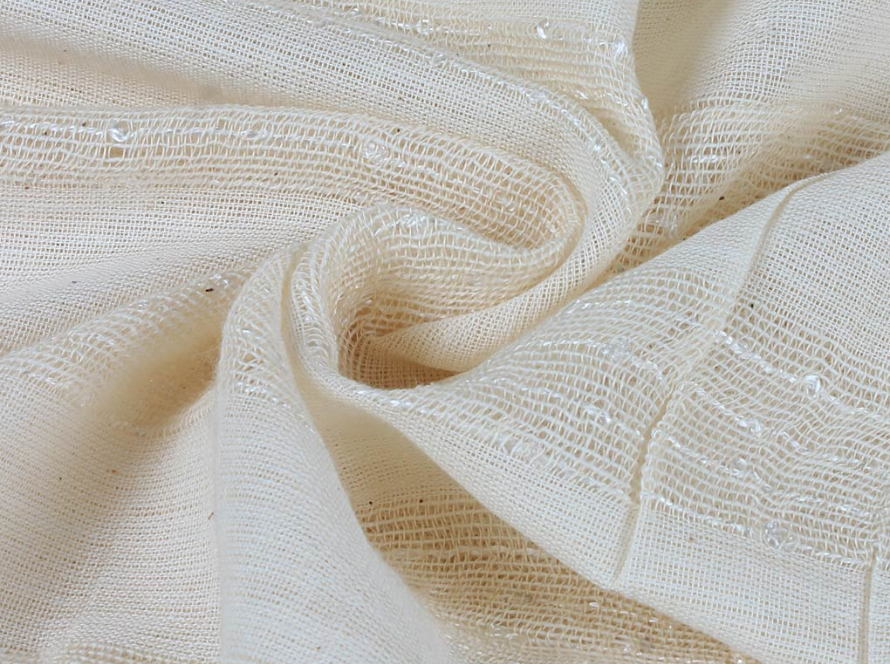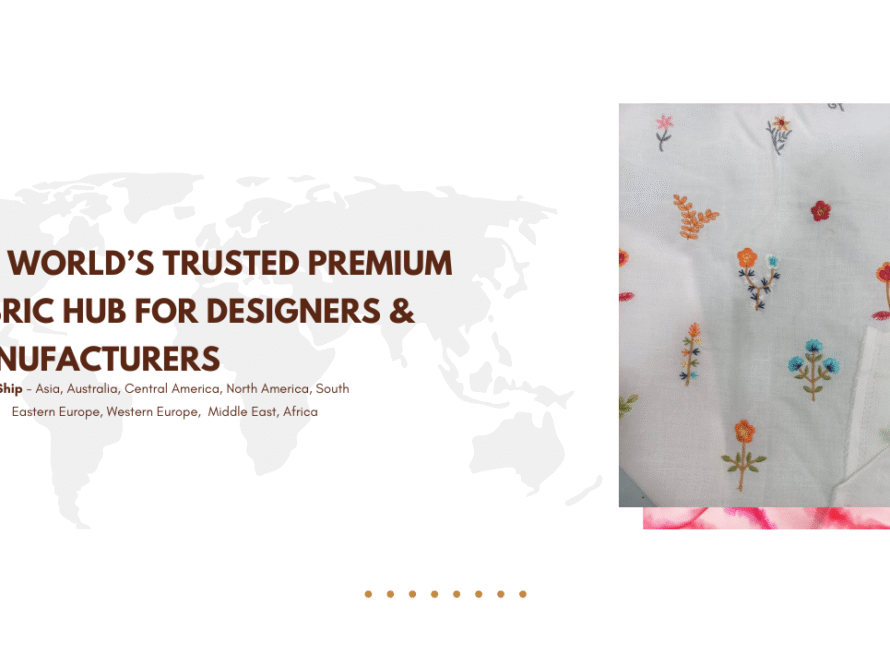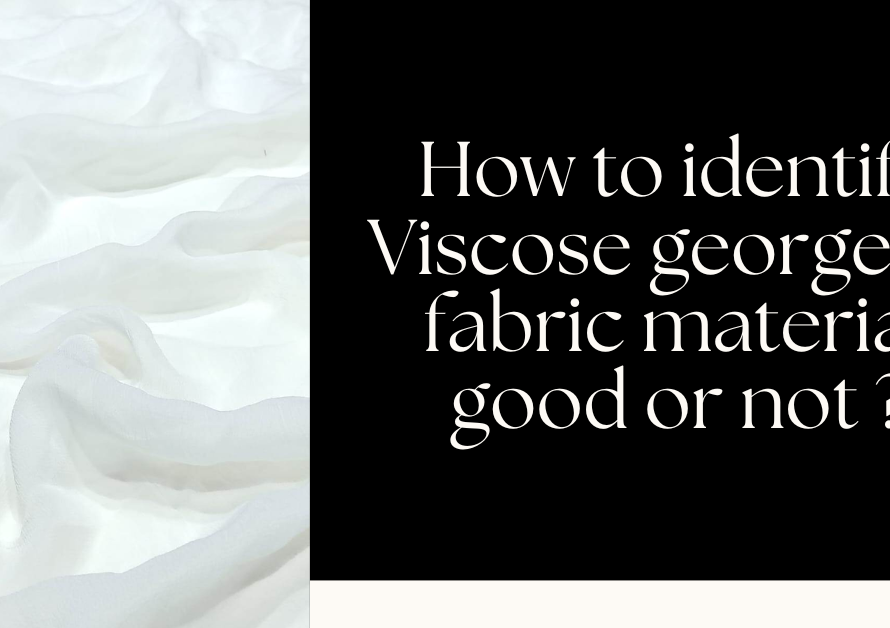Silk fabric, a symbol of opulence and timeless elegance, has woven its way into the heart of India’s textile heritage. In the vibrant tapestry of Gujarat, a region known for its rich cultural heritage, Madhav Fashion stands tall as a distinguished name among silk fabric manufacturers. Let’s unravel the exquisite legacy of Madhav Fashion and their contributions to the world of silk.
Top Silk Fabric Manufacturer in Gujarat, India: Madhav Fashion’s Exquisite Legacy
The Enchanting World of Silk: Silk fabric, renowned for its luxurious sheen and delicate texture, is a fabric that transcends eras and fashion trends. Gujarat, with its longstanding tradition of textile craftsmanship, holds a special place in the story of silk. This natural fiber, derived from silkworms, has been transformed into a variety of silk fabric types that grace traditional and contemporary attire.

Madhav Fashion: Where Tradition Meets Innovation: In the heart of Gujarat, Madhav Fashion stands as a beacon of excellence in silk fabric manufacturing. With a legacy steeped in heritage, their expertise combines the age-old techniques of silk weaving with modern design sensibilities. The result is a collection that captures the essence of silk’s elegance while embracing the spirit of contemporary fashion.
Crafting Silk’s Splendor: Madhav Fashion’s dedication to crafting silk’s splendor is evident in their range of offerings. From classic silk fabric to innovative silk blends, their collection caters to a diverse audience with varied preferences. Their commitment to quality ensures that each piece resonates with the authenticity and beauty that silk embodies.
A Symphony of Choices: Madhav Fashion’s silk fabric range spans from the regal Kanchipuram Silk to the luxurious Soft Silk. Each fabric tells a unique story, woven with threads of tradition and innovation. With Madhav Fashion’s offerings, silk enthusiasts can explore the versatile world of silk, from traditional attire to modern interpretations.

Embracing the Future: Madhav Fashion’s contribution to the silk fabric landscape goes beyond the present. By honoring tradition while embracing the future, they exemplify the spirit of evolution and growth. Their online presence allows enthusiasts across India and beyond to experience the allure of silk at their fingertips.
In the realm of silk fabric manufacturing, Madhav Fashion’s legacy is a testament to the enduring appeal of silk. Gujarat’s textile heritage finds its embodiment in their creations, showcasing the seamless blend of heritage, innovation, and elegance. As you explore their collection, you’re not just discovering silk fabric; you’re unraveling a story that weaves together the threads of culture, craftsmanship, and timeless beauty.
The Timeless Elegance of Silk Fabric: History and Benefits
Silk fabric, with its unparalleled sheen, luxurious texture, and rich history, has enchanted civilizations for centuries. The story of silk is a journey through time, filled with intrigue and craftsmanship that has left an indelible mark on the world of textiles.

History of Silk Fabric: The history of silk fabric traces back to ancient China, where the secret of silk production was zealously guarded. Legend has it that around 2700 BCE, Empress Leizu discovered silkworms and their remarkable ability to spin delicate threads. This discovery led to the creation of the first silk fabrics. The Silk Road, a network of trade routes connecting China with the West, became instrumental in spreading silk’s allure across continents. By the time silk reached Europe, it had become synonymous with luxury, elegance, and exoticism. The delicate process of silk production, involving the cultivation of silkworms, harvesting their cocoons, and weaving the fibers into fabric, remained a closely held secret for centuries.
Benefits of Silk Fabric: Silk fabric is celebrated for its myriad benefits. Its natural protein structure renders it incredibly soft and gentle against the skin. The fabric’s breathability and moisture-wicking properties make it a suitable choice for various climates. Silk’s insulating properties offer warmth in winter and coolness in summer, ensuring comfort throughout the year. Additionally, silk’s natural sheen adds a touch of opulence to any garment. Its hypoallergenic nature and resistance to dust mites make it an excellent choice for individuals with sensitive skin or allergies.
Versatility in Clothing: The versatility of silk fabric extends across a wide spectrum of clothing. Traditional Indian garments like sarees, salwar suits, and lehengas often feature silk due to its regal appeal and graceful drape. In Western fashion, silk finds its place in dresses, blouses, skirts, and formal wear. The fabric’s adaptability to various styles, from flowing and ethereal to structured and elegant, makes it a favorite choice for designers and fashion enthusiasts alike.
Types of Silk Fabric: Silk fabric comes in a diverse array of types, each with its unique characteristics and applications. Some prominent types include:
- Mulberry Silk: Derived from the Bombyx mori silkworm, mulberry silk is the most common type. It boasts a soft texture, natural sheen, and durability.
- Tussar Silk: Also known as wild silk, tussar silk is produced by wild silkworms. It has a textured appearance and a more matte finish.
- Chiffon Silk: Known for its lightweight and sheer quality, chiffon silk is commonly used in delicate dresses and scarves.
- Crepe Silk: Crepe silk features a crinkled texture that adds depth to garments. It drapes beautifully and is often used for formal attire.
- Georgette Silk: Georgette silk is lightweight with a slightly textured surface. It is favored for flowing dresses and sarees.
In summary, the allure of silk fabric is a culmination of its rich history, intrinsic benefits, and versatile applications. From its mysterious origins in ancient China to its widespread popularity across the globe, silk remains an embodiment of luxury and sophistication. Its journey through time continues to captivate fashion enthusiasts and textile aficionados, reminding us of the enduring charm of this exquisite fabric.

Frequently Asked Questions (FAQs) About Silk fabric and Madhav Fashion:
1. What type of fabric is silk? Silk is a natural protein-based fabric that is produced by silkworms during their cocoon-building process. The fabric is characterized by its softness, sheen, and luxurious feel. Silk is considered one of the most elegant and sought-after fabrics due to its unique properties and history.
2. What are 5 fabrics made of silk? Silk comes in various types, each with distinct characteristics. Five common fabrics made of silk include:
- Mulberry Silk: The most common type, known for its softness and durability.
- Tussar Silk: Also called wild silk, it has a textured appearance and a more matte finish.
- Chiffon Silk: A lightweight and sheer fabric often used in delicate dresses and scarves.
- Crepe Silk: Features a crinkled texture, adding depth to garments, and is used for formal attire.
- Georgette Silk: Lightweight with a slightly textured surface, favored for flowing dresses and sarees.
3. What is the name of Indian silk fabric? India is renowned for various types of silk fabrics, including Kanchipuram Silk, Banarasi Silk, Tussar Silk, Mysore Silk, and Assam Silk. Each of these fabrics carries a distinct regional identity and cultural significance.
4. Where is silk made of? Silk is made by silkworms, which spin cocoons from their silk protein. The process involves raising silkworms on mulberry leaves, harvesting the cocoons, and then carefully unraveling the silk fibers to create the fabric.
5. What are the 4 types of silk? The four main types of silk are:
- Mulberry Silk: The most common and widely produced type.
- Tussar Silk: Wild silk produced by silkworms that feed on non-mulberry leaves.
- Eri Silk: Another type of wild silk produced by silkworms that feed on castor leaves.
- Muga Silk: Exclusive to Assam, India, known for its golden color and durability.
6. Which type of silk is best? The choice of the “best” silk depends on the intended use and personal preferences. Mulberry Silk is often considered the best due to its softness, durability, and versatility.
7. Which is the best silk in India? Kanchipuram Silk, often referred to as Kanjivaram Silk, is regarded as one of the best and most luxurious silk fabrics in India. It originates from the town of Kanchipuram in Tamil Nadu and is known for its rich, heavy texture and intricate designs.
8. What are 12 items made from silk? Silk finds its way into a plethora of items, including sarees, dresses, blouses, ties, scarves, shawls, lingerie, pillowcases, bed sheets, curtains, handkerchiefs, and even artwork.
9. Which silk is softest? Mulberry Silk is often considered the softest and most luxurious type of silk due to the high quality of its fibers and the controlled environment in which it is produced.
10. Is 100% silk soft? Yes, 100% silk is renowned for its exceptional softness. The smooth, fine fibers of silk contribute to its luxurious feel against the skin.
11. Which silk is more expensive? Muga Silk from Assam, India, is often considered one of the most expensive silks due to its unique golden color, durability, and limited availability.
12. What is heavy silk called? Heavy silk is often referred to as “Dupion Silk” or “Dupioni Silk.” This type of silk is characterized by its slightly coarse texture and substantial weight, making it a popular choice for formal and structured garments.
13. What is 100 silk made of? 100% silk is made entirely from natural silk fibers that are produced by silkworms during their cocoon-making process. These fibers are then carefully woven to create the fabric.
14. Why is silk so expensive? Silk’s expense is attributed to its intricate production process. Silkworms are cultivated, and their cocoons are carefully harvested and processed to extract the delicate fibers. The labor-intensive nature of silk production, along with the high demand for its luxurious qualities, contributes to its cost.
15. What is expensive silk made of? Expensive silk is made from the delicate and intricate silk fibers produced by silkworms. These fibers are skillfully harvested, woven, and transformed into opulent fabrics that embody luxury and elegance.
16. Which silk is costly in India? Kanchipuram Silk, known for its rich heritage and exquisite craftsmanship, is often considered one of the costliest silks in India due to the intricate weaving techniques and luxurious designs.
17. Which state is famous for silk? Karnataka, particularly the city of Mysore, is renowned for its production of high-quality silk, known as Mysore Silk. This state’s expertise in silk production has earned it a distinguished place in India’s textile industry.
18. Which city is known as Silk City in India? Kanchipuram, located in Tamil Nadu, is widely known as the “Silk City of India.” It is celebrated for its production of Kanchipuram Silk sarees, characterized by their vibrant colors and intricate designs.
19. Which silk is pure? “Pure silk” typically refers to any silk fabric that is made entirely from natural silk fibers, without the addition of synthetic materials or blends.
20. Which is the best silk for saree? Kanjivaram Silk sarees are often considered the best choice due to their intricate craftsmanship, rich colors, and regal designs. These sarees are a symbol of South Indian heritage and elegance.
21. Is there fake silk? Yes, there are synthetic fabrics designed to imitate the appearance of silk. One common example is “artificial silk,” often referred to as “rayon” or “viscose.” While these fabrics can resemble silk, they do not possess the same luxurious qualities.
22. Which country is famous for silk? China is famous for being the birthplace of silk production. The Silk Road facilitated the spread of silk’s popularity to other parts of the world, contributing to its global reputation.
23. What are 3 properties of silk? Silk is known for its three main properties: lustrous sheen, softness against the skin, and natural temperature-regulating abilities. These properties contribute to its allure and comfort.
24. What is the secret of silk? The secret of silk lies in the intricate process of harvesting silk fibers from silkworm cocoons. This delicate process requires careful handling to ensure that the fibers remain intact and can be woven into luxurious fabrics.
25. Which state in India is famous for silk? Karnataka, Tamil Nadu, and Assam are particularly famous for their silk production in India. Mysore Silk, Kanchipuram Silk, and Assam Silk are some of the well-known varieties originating from these states.
26. Which silk is called the queen of fabrics? Chiffon Silk is often referred to as the “queen of fabrics” due to its lightweight and delicate nature. It drapes beautifully and is commonly used in elegant evening wear and formal attire.
27. Which silk is softest in India? Mulberry Silk, renowned for its exceptional softness and luxurious feel, is considered one of the softest silks available in India.
the world of silk is a tapestry of history, elegance, and cultural significance. From its origins in China to its global prominence, silk continues to be cherished for its unique qualities, making it a fabric that resonates with luxury, comfort, and timelessness.



